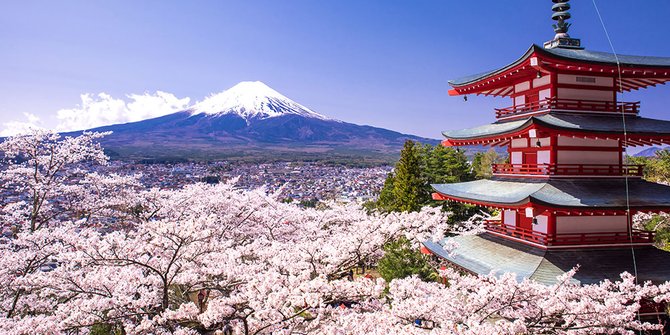Tahukah anda negara Jepang atau yang di sebut dengan negri Sakura merupakan negara yang kental akan budaya . Selain terkenal akan kebudayaannya Jepang juga terkenal akan wisatanya .Inilah yang di incar para turis karena di Jepang memiliki banyak sekali tempat wisata yang sangat terkenal dan tentunya sangat indah . Selain itu jepang juga memiliki kuliner yang sangat terkenal loh . di Jepang juga kaya akan kuliner dan tentunya sangat cocok untuk lidah Indonesia . Saya akan merekomendasikan untuk anda makanan apa saja yang musti anda coba jika berkunjung ke Jepang . langsung kita mulai saja dari yang pertama .
1. Sushi
Sushi juga sangat populer di Indonesia, sebagian dari kalian pasti sudah perna mencoba Sushi di Indonesia . Di Jepang varian sushi juga sangat banyak tetapi yang paling terkenal yaitu Dragon roll, Salmon roll dan California roll
2. Sashimi
Sashimi merupakan makanan khas Jepang yang sangat popular . Sashimi merupakan irisan daging binatang laut berupa ikan atau gurita yang segar biasanya di sajikan mentah dan nikmati denan kecap asin dan campuran wasabi .
3. Dorayaki
Bagi kalian yang suka menonton flim Doraemon pasti tidak asing lagi dengan makanan ini . Yapp betul sekali ini adalah makanan kesukaan Doraemon . Mirip dengan adonan pancake yang membedakanya adalah Dorayaki biasanya memiliki isi kacang merah di dalamnya . Tetapi di Indonesia dimodifikasi dengan isian coklat dan keju .
4. Onigiri
Onigiri merupakan nasi kepal khas Jepang yang memiliki isi seperti Tuna, Salmon, Ayam dan Sapi Yakiniku . Biasanya Onigiri merupakan makanan pengganjal perut bagi rakyat jepang saat sebelum pergi ke tempat kerja . Terkadang Onigiri juga sering di bawa anak – anak untuk bekal saat pergi piknik.
5. Udon
Udon merupakan maknan khas Jepang dengan mie yang memiliki ukuran besar dan memiliki tekstur mie yang kenyal dengan kuah yang cukup nikmat dan segar , bakal membuat kita ketagihan .
6. Soba
Selain Udon, Soba juga merupakan mie yang cukup terkenal di Jepang . Berbeda dengan Udon yang memiliki ukuran yang besar Soba memiliki ukuran mie yang kecil dan terbuat dari gandum . tentunya rasanya pasti sangat enak .
Itulah beberapa maknan Jepang yang bisa saya rekomendasi untuk anda dan tentunya masi banyak lagi makanan khas Jepang yang sangat nikmat yang harus anda coba jika pergi ke Jepang . maaf jika ada salah kata dan Terima Kasih

